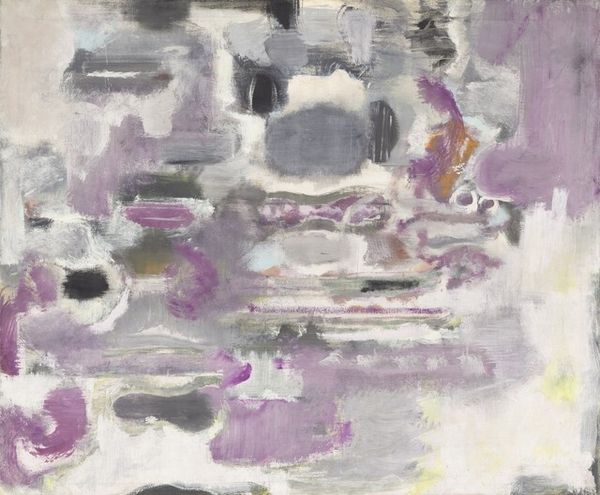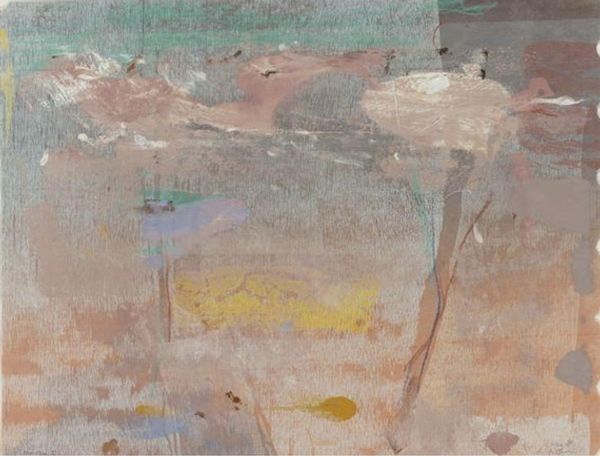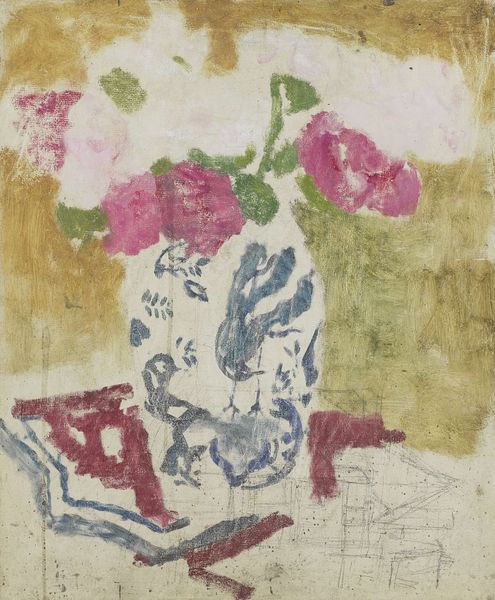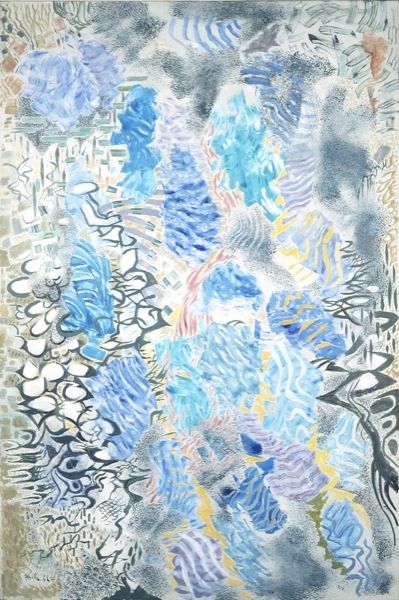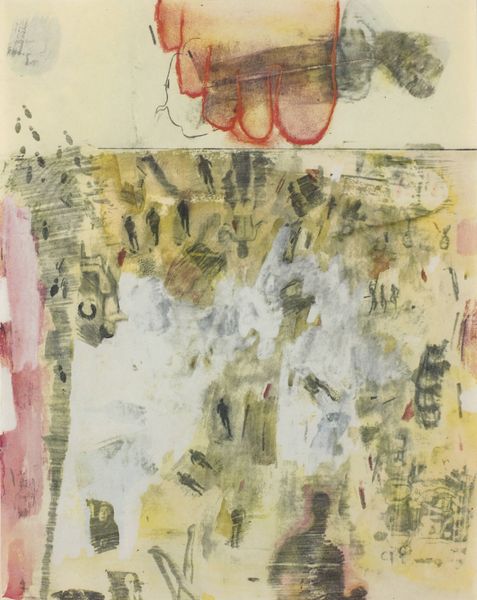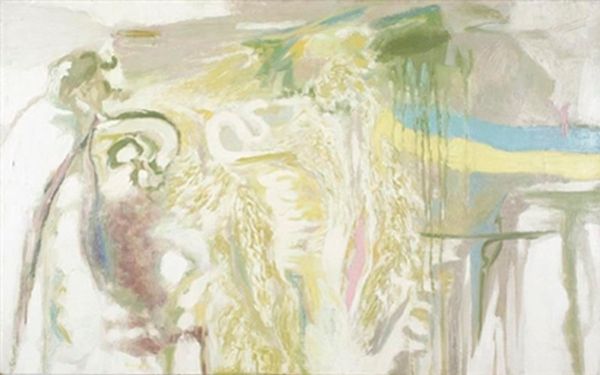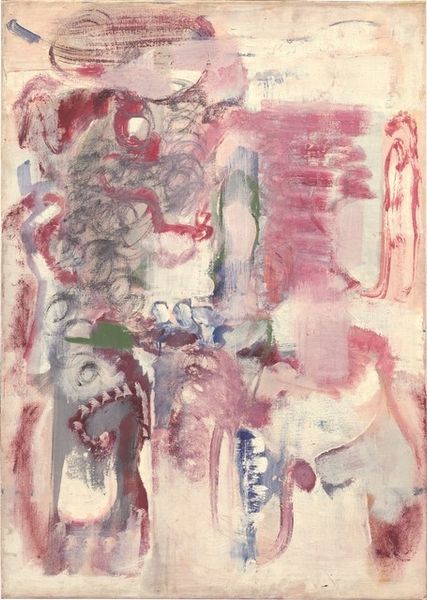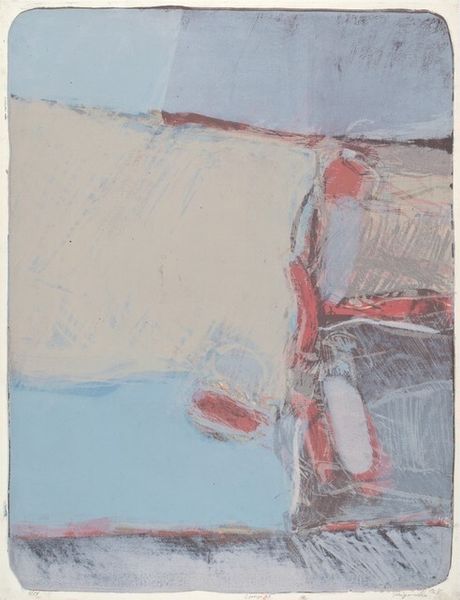
Dimensions: support: 1000 x 700 mm frame: 1032 x 736 x 50 mm
Copyright: © Kate Rothko Prizel and Christopher Rothko/DACS 2014 | CC-BY-NC-ND 4.0 DEED, Photo: Tate
Curator: Here we have an early work by Mark Rothko, simply titled "Untitled." Its undated nature leaves much to interpretation regarding his artistic trajectory. Editor: It's quite subdued, isn't it? Almost ghostly, like a faded memory rendered in paint. The canvas has a porous look and the colors blend softly together. Curator: Rothko, of course, was deeply interested in mythology and philosophy, seeking to express fundamental human emotions through abstract forms. I see a struggle here, between representation and pure abstraction, perhaps reflecting his own internal conflicts at the time. Editor: I'm interested in how the texture and layering of the paint itself contributes to the mood. Look at how the light catches the different surfaces, creating a sense of depth and movement. What kind of paint and material was he using to achieve this kind of look? Curator: Indeed, considering his later work, the subtle figuration here is striking, suggesting a yearning for connection and a grappling with the weight of history and personal experience. Editor: Looking at the brushstrokes and the color choices, I wonder what he was trying to communicate with these materials. What was his physical and emotional state while he worked on it? Curator: It really invites us to consider the socio-political climate of the time, and how Rothko, as a Jewish immigrant, navigated identity and belonging. It's a powerful testament to resilience. Editor: Seeing the end result of these materials and process of art-making, I now appreciate Rothko's early years and his journey to abstraction.
Comments
Join the conversation
Join millions of artists and users on Artera today and experience the ultimate creative platform.
tatemodern 6 months ago
⋮
This work belongs to the transitional period for Rothko. In the early 1940s he had used references to ancient myth to express the brutal anxieties of a world at war. Increasingly, however, he saw literal depictions of mythic subjects as inhibiting the viewer’s response. Describing the biomorphic forms in paintings such as this, he wrote: ‘every shape becomes an organic entity, inviting the multiplicity of associations inherent in all living things’. Gallery label, October 2016
